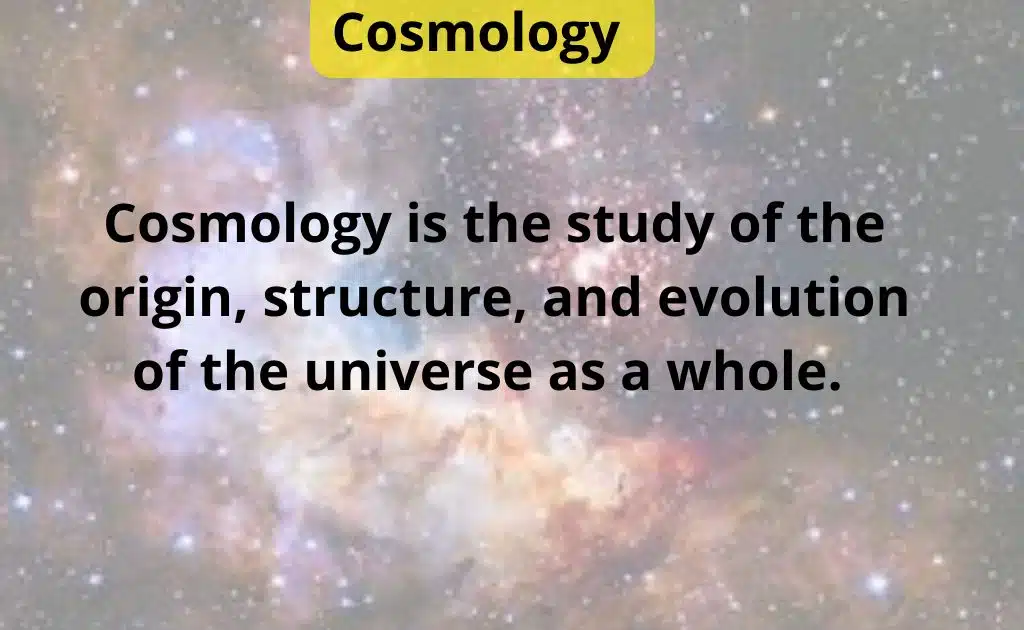Cosmology-Definition, History, And Einstein’s Static Cosmological Model
Cosmology is the study of the origin, structure, and evolution of the universe as a whole. It aims to understand the fundamental laws and principles that govern the universe, including the nature of space, time, and matter, and how these have changed over time.
Cosmologists use various observational and theoretical tools to study the universe, including telescopes, satellites, and computer simulations. They also draw on knowledge from other fields, such as physics, chemistry, and mathematics, to help them understand cosmology.
History of Cosmology
The history of cosmology stretches back thousands of years to ancient civilizations such as the Babylonians and ancient Egyptians, who developed early models of the universe based on religious and mythological beliefs. However, it wasn’t until the scientific revolution of the 16th and 17th centuries that cosmology began to develop into a modern scientific field.
During this time, astronomers such as Galileo and Johannes Kepler used telescopes to make new observations of the night sky and proposed new models of the solar system based on these observations. In the 18th and 19th centuries, scientists such as Isaac Newton and Albert Einstein developed new theories of gravity and the nature of space and time, which had a profound impact on cosmology.
In the early 20th century, Edwin Hubble made groundbreaking discoveries that revolutionized our understanding of the universe. Using a telescope, he calculated the distance to a distant nebulous object, known as a galaxy, and determined that it lay outside of the Milky Way.
This proved that our galaxy is just a small part of an enormous universe. Using the theory of General Relativity as a framework, Hubble measured the distances to other galaxies and found that they were all moving away from us. This led him to conclude that the universe is not static, but rather expanding.

In recent decades, cosmologist Stephen Hawking proposed further advancements in our understanding of the universe. He suggested that the universe has a definite size but lacks a definite boundary, similar to the Earth.
While the Earth is a finite planet, one can never find the “end” of it by traveling around it, instead, a person will continuously circle the globe. Additionally, Hawking proposed that the universe would not continue forever, but would end at some point.
Einstein’s Static Cosmological Model
In 1917, Einstein derived his cosmological model by making three assumptions that lay outside the scope of his equations. The first assumption was that the universe is homogeneous and isotropic on a large scale, meaning it is the same everywhere and at any given time, which is known as the cosmological principle.
The second assumption was that this homogeneous and isotropic universe had a closed spatial geometry, meaning the total volume of a three-dimensional space with uniform positive curvature would be finite but possess no edges or boundaries.
The third assumption was that the universe is static, meaning its large-scale properties do not vary with time. This last assumption, which was made before Hubble’s observational discovery of the expansion of the universe, was also natural, as it avoided a discussion of a creation event and it was the simplest approach.



Leave a Reply